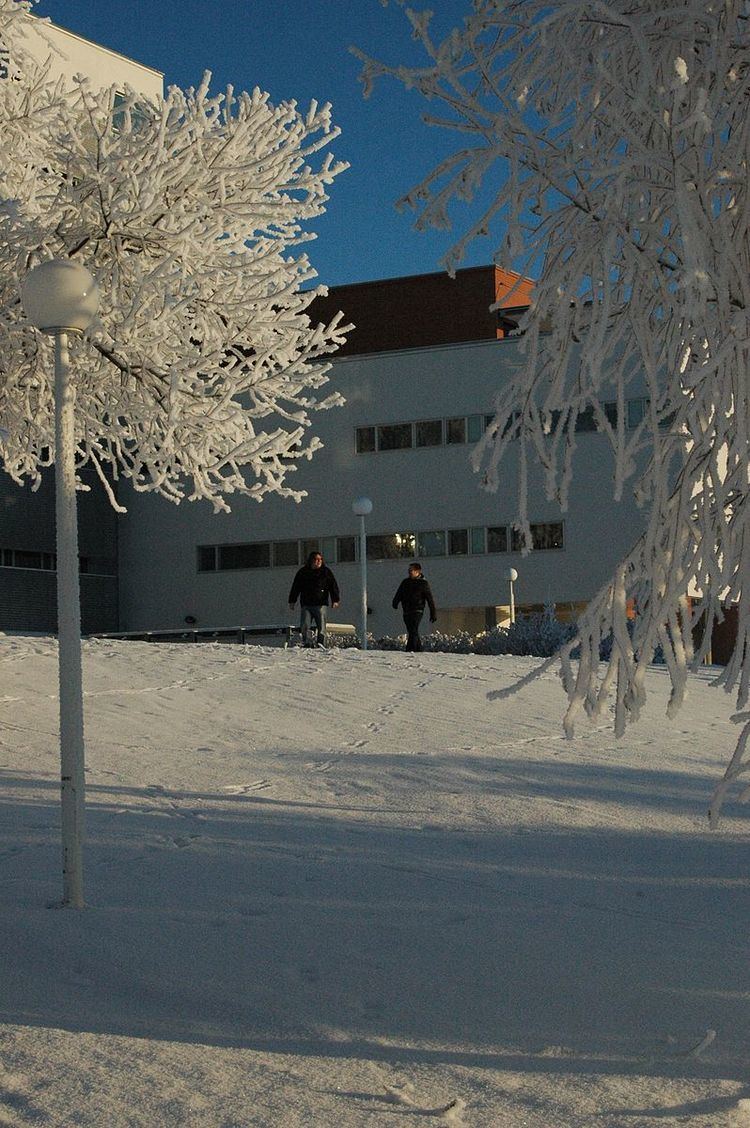Type Public Administrative staff 184 Postgraduates 400 Phone +358 29 4498000 Founded 1968 Rector Jari Kuusisto | Established 1968 Students 5,000 Doctoral students 310 Total enrollment 4,755 (2010) Undergraduates 4,400 Academic staff 327 | |
 | ||
Notable alumni Susanna Koski, Jutta Urpilainen, Sari Essayah, George Foster Similar University of Tampere, Vaasa University of Applie, University of Oulu, University of Turku, Åbo Akademi University Profiles | ||
The University of Vaasa (Finnish: Vaasan yliopisto, Swedish: Vasa universitet) is a multidisciplinary, business-oriented university in Vaasa, Finland. The campus of the university is situated by the Gulf of Bothnia adjacent to downtown Vaasa. The university has evolved from a school of economics founded in 1968 to a university consisting of three faculties: Faculty of Business Studies, Faculty of Philosophy and Faculty of Technology. With its Faculty of Business Studies, also called the Vaasa School of Economics, University of Vaasa is one of the largest business universities in Finland. The university has personnel of around 500 which includes a teaching staff of 180 and 54 professors. Around 5000 students are currently studying in various degree programs at the university.
Contents
History
In 1966 the Council of State made the decision to establish a School of Economics and Business Administration in Vaasa, and so Vaasa got its first institution of higher education which the region of Vaasa had worked for since the 1940s. The very next year the first students started their studies; 90 business and 60 correspondence students. The first principal to be chosen for the school was Tryggve Saxén and the first vice principal was Mauri Palomäki, who later would become the longest serving principal the school has seen so far. The lectures were first held in a yard building of Vaasa Commercial College in Raastuvankatu street, but in its second year the school moved into the whole house as the commercial college moved to a new building.
In 1977 the school became a state institution along with all other academic institutions in Finland.
In 1980 education in Humanities (languages) began and so the school became a "School of higher education" (in Finland the term is "Korkeakoulu"). In 1983 studies in the Social Sciences began and in 1990 Technology studies began in connection with Helsinki University of Technology. In 1991 it changed its name to University of Vaasa. In 1992 the school was organised into four faculties; The Humanities, Business Administration, Accounting and Industrial Management, and Social Sciences. In 1994 the university moved into its new premises on Palosaari. The university got the right to award master's degrees in Technology in 2004. In 2010 the university also reorganized its faculties to three, namely Faculty of Business Studies, Faculty of Technology and Faculty of Philosophy which includes previous faculties of Humanities and Social Sciences.
Campus
The university can be found in the neighbourhood of Palosaari beside the city's old cotton mill, which also houses part of the university. Each building has its own name, like the main building of "Tervahovi" (English: Pinetar Court) and the governing building of "Luotsi" (English: Pilot). These buildings were finished in 1994 and planned in the spirit of the former county architect Carl Axel Setterberg who planned most of Vaasa's public buildings in 1860. The part of the university placed in the old mill is called "Fabriikki" (English: Factory). There is also the academic library of Tritonia, which the university shares with the other academic institutions in the city, and the laboratory of Technobothnia, which is shared with the city's two universities of applied sciences. The whole campus is near the waterfront and surrounded by park areas. It is sometimes called the most beautiful campus in Finland.
Faculties
There are three faculties at the University of Vaasa:
Education and Research
The university of Vaasa is a business oriented and multi-disciplinary university. It offers education possibilities on the following levels:
The strategic areas of research are management and change, energy and sustainable development and financing and economic decision making.
Services
Rectors
Honorary doctorates
1988
1998
2006
2011
